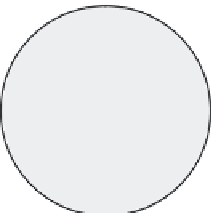Geoscience Reference
In-Depth Information
TABLE 14.2
Chemicals and Chemical Compounds Used in Water Treatment
Name
Common Application
Name
Common Application
Activated carbon
Taste and odor control
Aluminum sulfate
Coagulation
Ammonia
Chloramine disinfection
Ammonium sulfate
Coagulation
Calcium hydroxide
Softening
Calcium hypochlorite
Disinfection
Calcium oxide
Softening
Carbon dioxide
Recarbonation
Copper sulfate
Algae control
Ferric chloride
Coagulation
Ferric sulfate
Coagulation
Magnesium hydroxide
Deluoridation
Oxygen
Aeration
Potassium permanganate
Oxidation
Sodium aluminate
Coagulation
Sodium bicarbonate
pH adjustment
Sodium carbonate
Softening
Sodium chloride
Ion exchanger regeneration
Sodium fluoride
Fluoridation
Sodium fluosilicate
Fluoridation
Sodium hexametaphosphate
Corrosion control
Sodium hydroxide
pH adjustment
Sodium hypochlorite
Disinfection
Sodium silicate
Coagulation aid
Sodium thiosulfate
Dechlorination
Sulfur dioxide
Dechlorination
Sulfuric acid
pH adjustment
its environmental chemical behavior. In a water molecule, the two hydrogen atoms
always
come
to rest at an angle of approximately 105° from each other. The hydrogens tend to be positively
charged and the oxygen tends to be negatively charged. This arrangement gives the water molecule
an electrical polarity; that is, one end is positively charged and one end is negatively charged. This
105° relationship makes water lopsided, peculiar, and eccentric; it breaks all the rules (Figure 14.1).
In the laboratory, pure water contains no impurities, but in nature water contains a lot of materi-
als besides water. This is an important consideration for the environmental professional tasked
with maintaining the purest or cleanest water possible. Water is often called the
universal solvent
,
a fitting description when you consider that, given enough time, water will dissolve anything and
everything on Earth.
14.1.2.2 Water Solutions
A
solution
is a condition in which one or more substances are uniformly and evenly mixed or dis-
solved. In other words, a solution is a homogeneous mixture of two or more substances. Solutions
can be solids, liquids, or gases, such as drinking water, seawater, air, etc. Here, we focus primarily
on liquid solutions. A solution has two components: a
solvent
and a
solute
(see Figure 14.2). The
solvent is the component that does the dissolving. Typically, the solvent is the species present in the
greater quantity. The solute is the component that is dissolved. When water dissolves substances, it
creates solutions with many impurities. Generally, a solution is transparent and not cloudy. Because
H
+
O
-
H
+
FIGURE 14.1
A molecule of water.





Search WWH ::

Custom Search